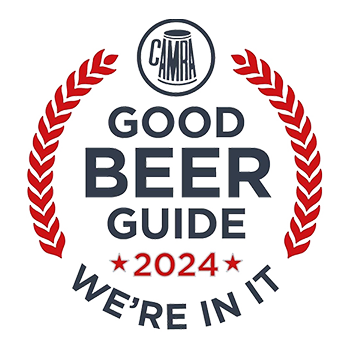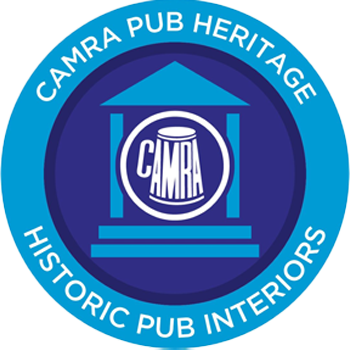This website is currently in beta. If you wish to go back to the current site please click here. To provide feedback or find out more about this site, please click here.



One of London's Real Heritage Pubs and Grade II listed, dating from at least 1602 and claimed by some to be the oldest surviving pub in London. Formerly known as the League of Seven Stars after the seven provinces of the Netherlands; amongst its first customers were Dutch sailors who had settled in the area. Shakespeare performances took place nearby in Middle Temple and the playwright himself may even have drunk here. Later on, the novelist Charles Dickens is thought to have used the pub as a model for The Magpie & Stump featured in Pickwick Papers.
Nowadays the bar, with its decorative Victorian bar-back, is located in the narrow central space between two other distinctive drinking areas. There are several impressive brewery mirrors and others advertising various drinks. The pub is popular with the legal profession and the snug drinking area on the left is known as the Wig Box.
The pub is run by the redoutable Rxy Beaujolais - the Alewife For the Ages, as a pub critic has called her. The very well regarded food is a result of her management. The pub's own website contains much greater details on the pub's history and Roxy's.
The interior features classic film posters and caricatures with a legal theme. Its beer range includes guest beers from smaller brewers. The comforting gastro-fare menu changes daily and will satisfy meat-eaters and vegetarians alike. Note that toilets are only accessible via steep stairs, a relic of the old Elizabethan house the inn once was.
Another feature of the pub was the resident pub cat who was called 'Peabody' following the demise of 'Ray Brown', the latter pictured RIP proudly wearing his legal ruff. The cat Peabody is, alas, no more. The new cat was called 'Clement Attlee', a fine and more robust specimen, but objects to wearing the ruff. We don't blame him. During the Covid shutdown the cat Clement Attlee was taken home by one of the Bar staff and now lives with them . A new cat has settled in named General and appears to have no problem wearing the Ruffle and loves wandering round visiting the customers
Historic Interest
Grade II listing:- Formerly known as: The Log and Seven Stars Public House CAREY STREET. Public house. Perhaps C17 in origins (dated 1602) with later alterations and additions. Painted brick clads partial timber frame; slate roof. 2 storeys and attic; 4 windows, that to right broader and set in projecting jetty which may have been a separate building. Ground floor with C19 wooden public house frontage of 4 windows and 2 entrances flanked by pilasters; panelled aprons to windows. Gauged brick flat arches to 1st floor recessed sashes, except 1 window in jettied bay to right with reeded, architraved surround. INTERIOR: two rooms to ground floor. C19 bar backs with mirrors, that to larger bars with cupboards. Bar counters to both rooms of similar date. c1900 corner fireplace in right-hand bar, its joinery continues as ledges round side walls and across windows. Ceilings with thin beams of similar date masking earlier framing. Narrow stair to upper floors set behind main bar.
Three star - A pub interior of outstanding national historic importance
Listed status: II
A candidate for the oldest pub in London, with possibly unique names on two doors, and with Victorian bar-back and bar counters.
This is a small, famous and much-loved free house in the heart of legal London opposite the Royal Courts of Justice. The frontage bears the date 1602 but the building itself probably dates from "only" the 1680s, and was extended into the building on the right in 1878. The core of the pub is the part with doors embellished with etched and gilded glass, declaring ‘private counter’ (on the left) and ‘general counter’ (right). These names are probably unique, certainly in the experience of the writers, and correspond to the more commonly used ‘private bar’ and ‘public bar’. So there were evidently two separate areas fronting on to a common servery and divided, no doubt, by a timber screen. The counter (a plain affair) and bar-back are Victorian and the coloured advertising panels in the head of the latter are typical of the period around 1870-1890. The pub further expanded into the building on the left hand side in relatively recent years to form a cosy drinking area called the ‘Wig Box’. Imagine the pub without these extensions and you can get a sense of just how small it was in Victorian days. There are three fine old advertising mirrors.
A small, famous and much-loved free house in the heart of legal London. The frontage bears the date 1602 but the building itself probably dates only from the 1680s. It was extended into the next building in 1878. The core of the pub is the part with doors embellished with etched and gilded glass, declaring ‘private counter’ (on the left) and ‘general counter’ (right). These names are probably unique, certainly in the experience of the writers, and correspond to the more commonly used ‘private bar’ and ‘public bar’. So there were evidently two separate areas fronting on to a common servery and divided, no doubt, by a timber screen. The counter (a plain affair) and bar-back are Victorian and the coloured advertising panels in the head of the latter are typical of the period around 1870-1890. The pub expanded into a right-hand area and recently has experienced further growth on the left into the next-door building to form a cosy drinking area called the ‘Wig Box’. Imagine the pub without these extensions and you can get a sense of just how small it was in Victorian days. There are three fine old advertising mirrors.
You must be a Digital Subscriber or CAMRA Member to be able to view specially curated GBG descriptions

This Pub serves 1 changing beer and 2 regular beers.
Seven Stars, London
Changing beers typically include: Dark Star - Hophead , Greene King - IPA
Source: National
With an unmistakable cover design, we are excited to announce that the foreword for this year’s Good Beer Guide has been penned by Bruce Dickinson, frontman and lead singer of Iron Maiden. © Campaign for Real Ale – Bruce Dickinson...